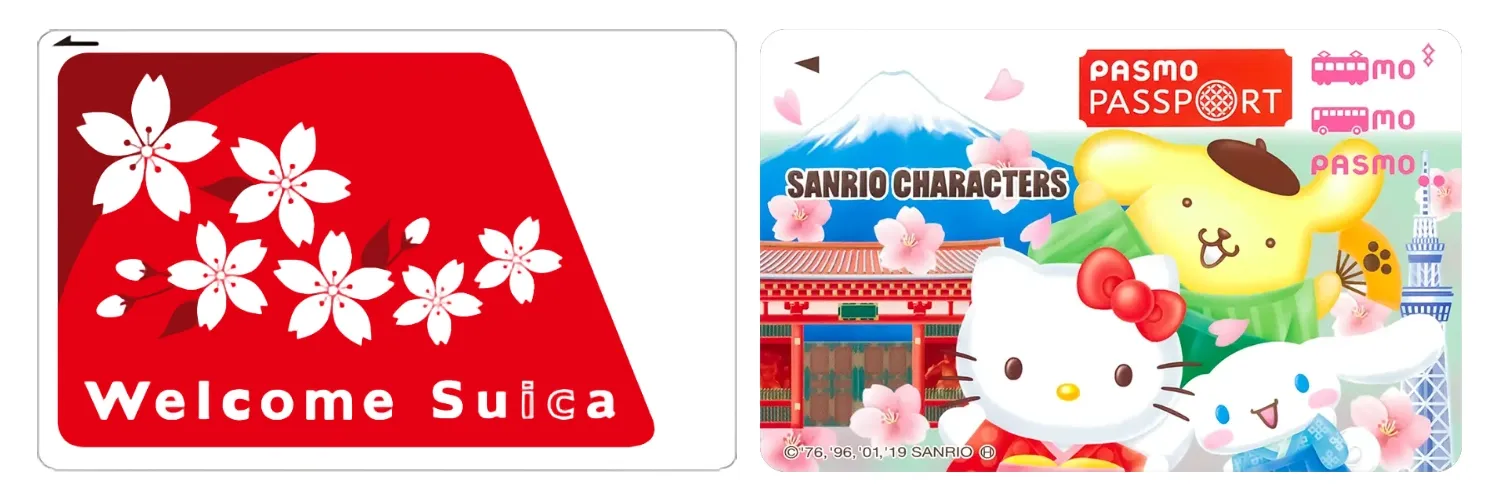24 Feb 2024
Written by Pitari Japan Team
Frequently Asked: What Card or Train Ticket to Get in Tokyo
Suica, Pasmo, Tokyo Subway Ticket, or Japan Rail Pass?
Easy Cheatsheet to Choose Which Ticket to Buy
We understand it might be quite confusing for first-timers, and so we've prepared this simple cheatsheet with a decision tree you can just follow. Do note that we've simplified certain things, like how to calculate the value of the Tokyo Subway Ticket, and we are only including the 7 Day Nationwide Japan Rail Pass for comparison (as there are countless other rail passes available).
Easy Concepts to Understand Tokyo's Train Tickets
In general, it has helpful to think about four things:
Stored-Value Cards
These are the normal type of digital wallet cards that many trains around the world use. You simply put money into it and you can use this to ride the trains. In Japan, these are called IC Cards and these include the Suica and Pasmo.
In Tokyo, the two IC Cards you will find are:
- Suica (by JR East)
- Pasmo (by all other operators, including Tokyo Metro)
Train Operators
Japan doesn't have one single train operator, and in fact one city can have multiple different train operators. By default, each of these train operators will collect their own separate fares as they are different companies, but you can use a single type of IC Card to ride on the lines of all these companies.
In Tokyo, you will find these operators:
- JR (the nationwide operator, operators a few lines in Tokyo)
- Tokyo Metro (operates the widest subway network in Tokyo)
- Toei Subway (operates the second widest subway network in Tokyo)
- Keikyu (operates the lines between Haneda Airport and downtown Tokyo)
- Keisei (operates the lines between Narita Airport and downtown Tokyo)
Unlimited Ride Passes
These allow you to take the trains for an unlimited number of times within a fixed period. Individual train operators typically offer these passes to let you ride on their lines. If you buy the Tokyo Subway Ticket, you can take the Tokyo Metro unlimited times, but if you need to take a JR train, then you would need an IC Card like a Suica or Pasmo.
In Tokyo, here are the common unlimited ride passes:
- Tokyo Subway Ticket covers unlimited rides on Tokyo Metro and Toei Subway for a 24, 48, 72 hour period
- Tokunai Pass covers JR trains within downtown Tokyo.
There is also the commonly mentioned Japan Rail Pass that covers all JR trains nationwide in Japan (including the shinkansen (新幹線, Bullet train)), but most of the passes by JR are for inter-city travel. If you're only going to be staying within Tokyo (or only making a round-trip between Tokyo and Osaka by Shinkansen), it is not worth considering the Japan Rail Pass
Special Trains with Additional Fares
Some trains in Japan require an additional ticket to ride, like the shinkansen (新幹線, Bullet train). Most local trains like Tokyo Metro, or JR trains in Tokyo, have a single regular fare to get from Point A to Point B. But when you travel between cities, special trains are run by train operators which might be faster, have more luxurious seats, etc. Typically, these special trains are called "Limited Express" trains (other than the shinkansen) by JR, and require an extra fare. This is why you cannot just use a regular IC Card (ICカード, IC Kādo) to ride these trains, as you need to pay for the extra fare as well. That's why when you're travelling on the shinkansen, it is recommended to buy the shinkansen tickets in advance or get a Japan Rail Pass (which is an Unlimited Ride Pass for the shinkansen and JR lines).
Common Question: I'm travelling to XXX city, do I need to buy the Japan Rail Pass?
It seems to be a common gut reaction amongst tourists that the moment you travel to a different city from Tokyo, you need to get the Japan Rail Pass. We've written a guide about rail passes here, but the general gist of knowing whether to get a rail pass, is to calculate the total journeys that you need, and if it costs more or less than the rail pass.
In essence, if you are only going to take ¥30,000 worth of trains, why would you pay for a ¥50,000 rail pass? But if you are going to take ¥80,000 worth of trains, then of course a ¥50,000 rail pass makes sense. Here's a popular website to calculate the cost of your journeys.
© 2023 Ki Creative. All Rights Reserved.
Due to changing circumstances, readers are advised to do their own additional research. All information on this site is purely for reference only.
Privacy




